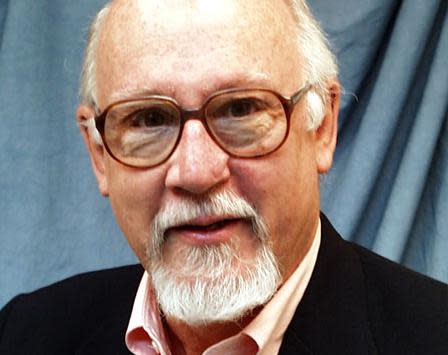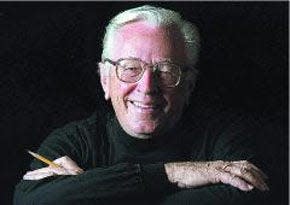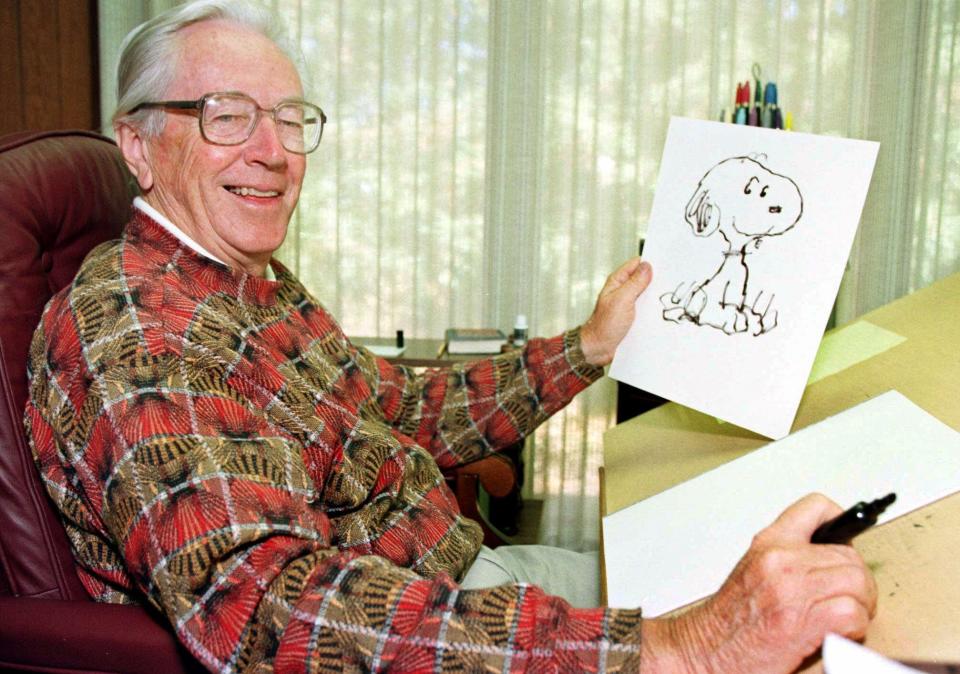Author observes Charlie Brown through the decades | DON NOBLE
- Oops!Something went wrong.Please try again later.

Studies of popular culture in America — books, movies, TV sitcoms, and even comic strips — can vary from the absurd to the truly insightful.
Some theorists will tell you that a romance novel is as important and beautiful as “King Lear.” Who are you to judge?
On the other hand, pop culture can tell us about ourselves in ways that serious drama, film, literary fiction and so on may not, or at least not in so easily accessible a fashion. Pop culture usually mirrors the general culture, but it can definitely reinforce certain cultural givens and, if it is bold or provocative, work to shape cultural mores.
The Western, for example, demonstrates the American myth of rugged self-reliance and, sadly, shows the Native American as savage.
MORE FROM DON NOBLE: Mental illness meets manipulation, ends in murder in true crime book
The Horatio Alger novels illustrate the “rags to riches” theme in American life, what we often call “the American Dream,” but close examination shows us that persistent hard work alone is not enough to generate a rise from poverty.
The poor boy in “Ragged Dick” or “Mark, the Match Boy,” must demonstrate real virtue under pressure: return a found wallet, or save the girl child from the wheels of a runaway carriage. Then, because the girl’s father owns the bank, little Mark or Dick gets an opportunity to work hard and rise.
Blake Scott Ball, educated at the University of Alabama and now an assistant professor of history at Huntingdon College, has done a thorough and graceful job of showing how the comic strip “Peanuts” generally reflected the shifting issues and concerns in American society and only on rare occasions got ever so slightly out in front.
“Peanuts” was America’s favorite comic strip. At its peak, there were 100 million readers each day.
Charles Schulz drew it for almost 50 years, through the relatively complacent but anxious Cold War 1950s, the tumultuous 1960s, the Vietnam War, the civil rights movement and the rise of feminism.
Ball begins by establishing Schulz’s own baseline. Shultz, we learn, served in World War II and became a staff sergeant in charge of a machine gun squad.

He saw some combat and returned realizing there was nothing glorious about war. Always a believer, after the war he was born again and became a member of the Church of God.
Patriotism and faith would be at his core and “Peanuts” would never be avant garde, radical, or progressive.
It was not Shultz’s way or Charlie Brown’s way. The strip would be purposely middle-of-the-road, ambiguous, like Charlie Brown himself, wishy-washy, but still open to some interpretation.
In the early days, for example, Linus’ security blanket and Charlie’s worried outlook were understood by some to be manifestations of existential alienation and cultural angst.
Later “Peanuts” would become more Christian, with Linus quoting the Bible and some discussion/debate over the Great Pumpkin and even Santa Claus.
In 1968, Shulz integrated “Peanuts” with young Franklin, although he was worried about offending African-Americans with that portrayal and it remained unclear exactly what role Franklin was to serve.
During the Vietnam War, Snoopy, flying his doghouse repeatedly into combat against the Red Baron, frustrated, never achieving success, became a kind of mascot in Vietnam. U.S. aircraft bore Snoopy’s image.
Schulz, like many in his generation, was conflicted about the war, but could never condemn it and remained determined to support the troops who were sent by the government to fight it.
Feminism likewise was a two-edged sword for Schulz. Abortion rights and even birth control were problematic for him. Obviously they were not treated directly in “Peanuts.”

He endorsed traditional gender roles and but also wished to promote gender equality. Lucy was tough and forceful, but finally girls were portrayed with some stereotyped female characteristics, nagging and not skillful enough at some games, and rightly unhappy that society valued prettiness over capability.
I was particularly interested in Schulz’s maneuverings around environmental issues. Yes, he agreed, our air and water and soil were being degraded, but in “Peanuts” he seemed to exonerate capitalism and promote individual responsibility: We should turn off the lights and recycle bottles, reject plastic straws, and ignore the gigantic smokestacks filling the sky with poison.
Over time, as America became more divided, Schulz came to seem too conservative and “Peanuts” lost popularity to strips like “Doonesbury.”
The middle shrank, Americans took sides, and left ambivalent Charles Schulz and wishy-washy Charlie Brown with nowhere to stand.
Don Noble’s newest book is Alabama Noir, a collection of original stories by Winston Groom, Ace Atkins, Carolyn Haines, Brad Watson, and eleven other Alabama authors.
“Charlie Brown’s America: The Popular Politics of ‘Peanuts’”
Author: Blake Scott Ball
Publisher: Oxford University Press, New York, 2021
Price: $34.95 (Hardcover)
Pages: 239
This article originally appeared on The Tuscaloosa News: Author observes Charlie Brown through the decades | DON NOBLE

